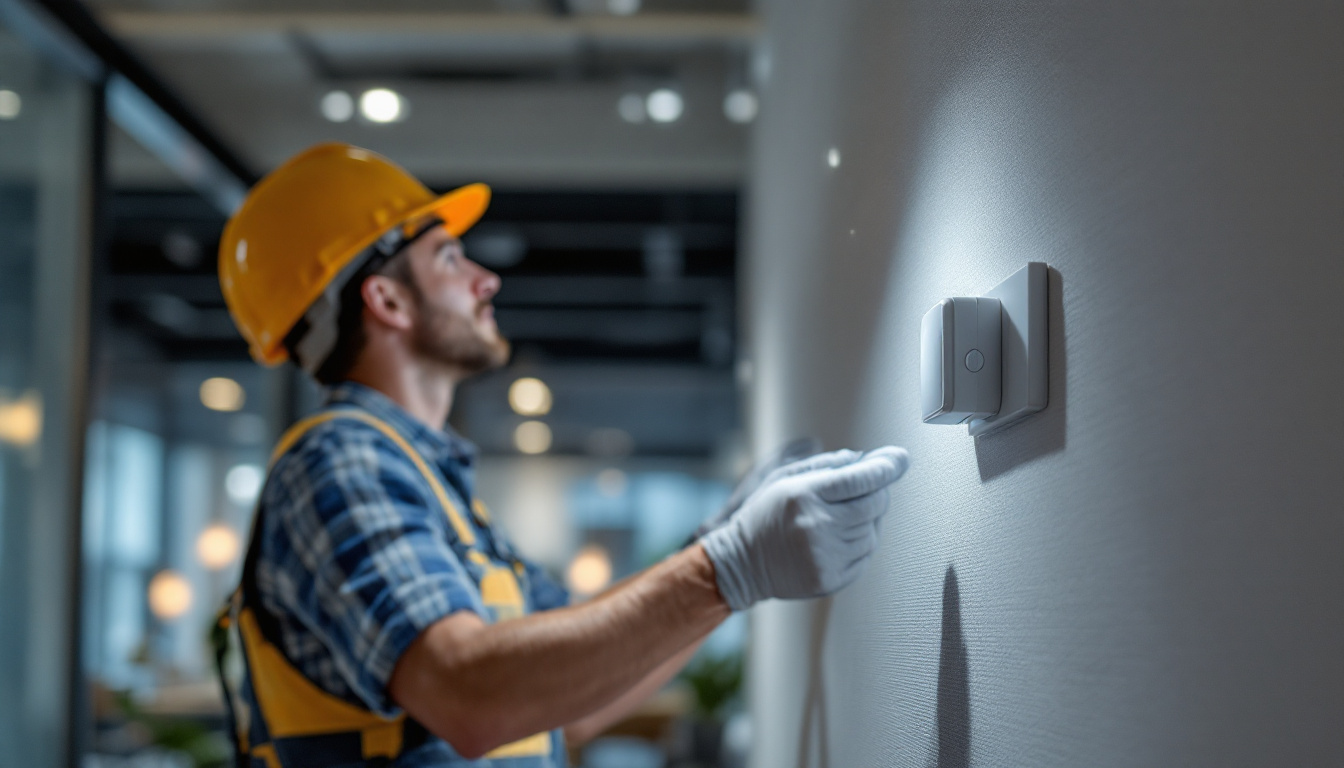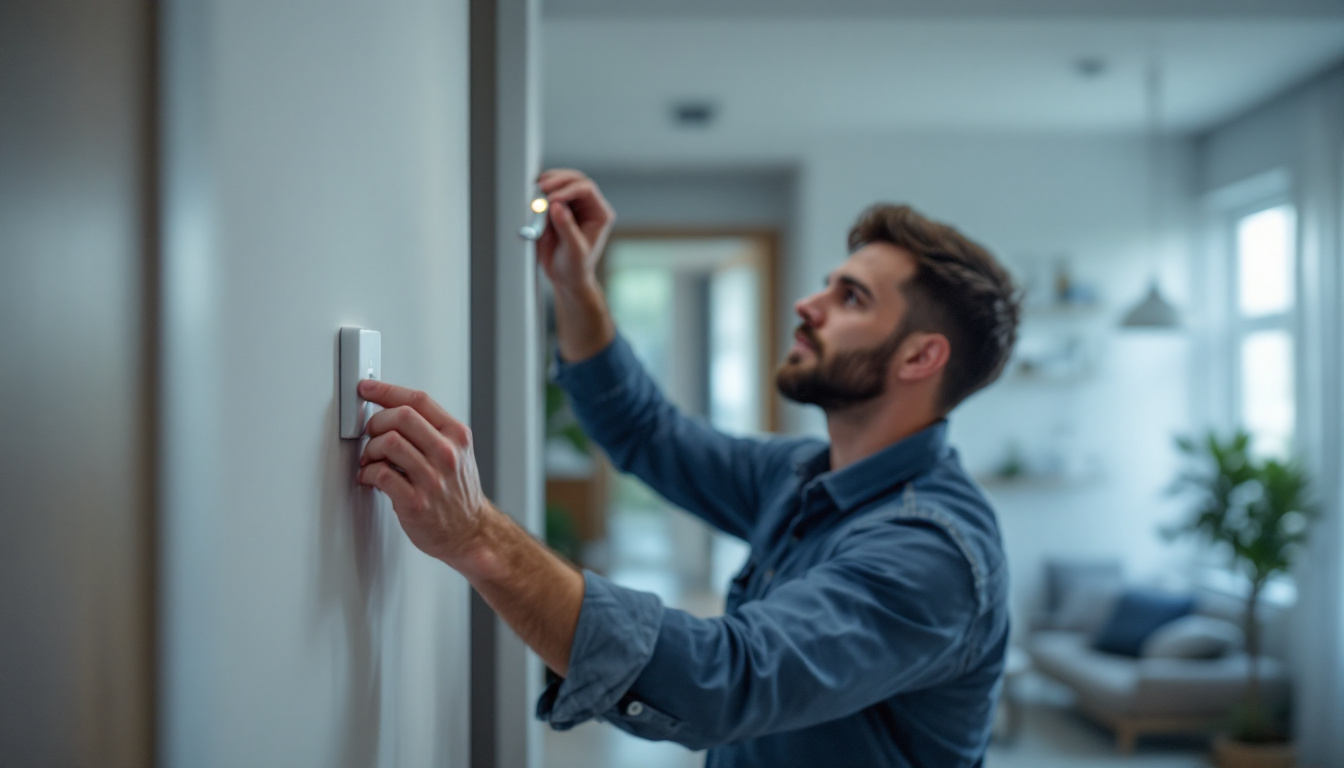
In the ever-evolving landscape of lighting technology, occupancy sensors have emerged as a crucial component for energy efficiency and enhanced user experience. For lighting contractors, understanding the best practices surrounding the installation and use of these devices is essential. This article delves into the nuances of occupancy sensors, providing insights tailored specifically for lighting professionals.
Occupancy sensors are devices designed to detect the presence of people in a space and automatically control lighting based on that presence. They contribute significantly to energy savings by ensuring that lights are only on when needed. Various types of occupancy sensors are available, including passive infrared (PIR), ultrasonic, and dual-technology sensors, each with its unique applications and benefits.
Different types of occupancy sensors serve various purposes, and understanding these can help contractors choose the right solution for a specific project. Passive infrared sensors detect heat emitted by the human body, making them ideal for smaller spaces where movement is limited. Ultrasonic sensors, on the other hand, use sound waves to detect motion and are better suited for larger areas where movement may be less frequent.
Dual-technology sensors combine both PIR and ultrasonic technologies, offering a more reliable solution for environments with varying occupancy patterns. Each type has its advantages and disadvantages, and selecting the appropriate sensor depends on the specific requirements of the space. For instance, in hallways or stairwells, where people may pass through quickly, a PIR sensor might be less effective, while an ultrasonic sensor could pick up on subtle movements more effectively. Understanding the layout and typical usage of a space is crucial in making the right choice.
Implementing occupancy sensors can lead to substantial energy savings, reducing electricity costs significantly. In commercial settings, where lighting can account for a large portion of energy consumption, these devices can make a marked difference. Additionally, occupancy sensors enhance user comfort by ensuring that spaces are adequately lit when occupied and dimmed or turned off when empty.
Moreover, the integration of occupancy sensors can contribute to sustainability goals. As organizations strive to reduce their carbon footprint, the use of energy-efficient lighting solutions becomes increasingly important. Occupancy sensors align perfectly with these objectives, making them a valuable addition to any lighting contractor’s toolkit. Beyond energy savings, these sensors can also extend the lifespan of lighting fixtures by reducing the total hours they are in use, thereby minimizing maintenance costs and the frequency of replacements. This not only benefits the bottom line but also supports a more sustainable approach to resource management.
In addition to energy efficiency and cost savings, occupancy sensors can enhance safety in various environments. For example, in public spaces such as restrooms or stairwells, lights that automatically turn on when someone enters can help prevent accidents and improve visibility. This feature is especially beneficial in facilities that operate during off-peak hours or have irregular occupancy patterns. Furthermore, with advancements in technology, many modern occupancy sensors can be integrated with smart building systems, allowing for remote monitoring and control, which adds another layer of convenience and efficiency for building managers.
proper installation of occupancy sensors is critical to their effectiveness. Lighting contractors must consider several factors to ensure optimal performance. From placement to calibration, each step plays a vital role in maximizing the benefits of these devices.
The placement of occupancy sensors is one of the most significant factors influencing their performance. Sensors should be installed at a height that allows for optimal detection of movement. Generally, this is around 8 to 10 feet off the ground, but specific applications may vary. Additionally, contractors should avoid placing sensors near obstructions such as furniture or walls that could block the detection zone.
It is also essential to consider the layout of the space. In open areas, a single sensor may suffice, but in larger or more complex environments, multiple sensors may be necessary to ensure complete coverage. Understanding the flow of foot traffic and potential blind spots can help in determining the best locations for installation. Furthermore, the type of occupancy sensor—whether passive infrared, ultrasonic, or dual-technology—can also influence placement decisions. Each type has its unique strengths and weaknesses in detecting motion, which should be matched to the specific characteristics of the environment.
Once installed, occupancy sensors require proper calibration to function effectively. Many sensors come with adjustable sensitivity settings that allow contractors to tailor the device’s response to specific environments. For instance, in areas with frequent movement, a higher sensitivity setting may be appropriate, while quieter spaces may benefit from lower sensitivity.
It is also important to test the sensors after installation to ensure they are functioning as intended. This may involve walking through the detection zone to confirm that the lights respond correctly. Regular maintenance checks can help identify any issues that may arise over time, ensuring continued efficiency. Additionally, educating users about the operation of the sensors can lead to better overall performance. Providing guidance on how to adjust settings or troubleshoot minor issues can empower users and enhance the longevity of the system. Moreover, integrating occupancy sensors with other smart building technologies can further optimize energy savings and improve user experience, making it a key consideration during the installation process.
Occupancy sensors can be integrated with other lighting control systems to enhance functionality and user experience. This integration can lead to more sophisticated lighting solutions that adapt to the needs of the space and its occupants.
Incorporating occupancy sensors into smart lighting systems allows for advanced control features. For example, these sensors can work in conjunction with daylight sensors to adjust artificial lighting based on natural light levels. This not only improves energy efficiency but also creates a more comfortable environment for occupants.
Furthermore, smart systems can provide data analytics, offering insights into occupancy patterns. This information can be invaluable for facility managers looking to optimize energy use and improve overall building performance.
Occupancy sensors can also be integrated with heating, ventilation, and air conditioning (HVAC) systems. By coordinating lighting and climate control based on occupancy, contractors can create a more efficient and comfortable environment. For example, if a room is unoccupied, both the lights and HVAC can be automatically adjusted to save energy.
This level of integration not only enhances energy savings but also contributes to a more sustainable approach to building management. As energy efficiency becomes a priority for many organizations, the ability to control multiple systems through occupancy sensors is a significant advantage.
While occupancy sensors offer numerous benefits, they also come with challenges that lighting contractors must navigate. Understanding these challenges and implementing effective solutions can lead to successful installations and satisfied clients.
One common issue with occupancy sensors is false triggering, where lights turn on or off unexpectedly. This can be caused by various factors, such as pets moving through the detection zone or environmental conditions like drafts. To mitigate this issue, contractors should carefully consider the sensor’s placement and adjust sensitivity settings accordingly.
Additionally, educating clients about the technology can help manage expectations. Providing guidance on how to use the system effectively can reduce frustration and enhance user satisfaction.
Another challenge is ensuring compatibility between different systems and devices. Not all occupancy sensors work seamlessly with existing lighting or control systems. Before installation, contractors should verify that the chosen sensors are compatible with the overall system architecture.
In some cases, upgrading existing systems may be necessary to accommodate new technology. This can involve additional costs, but the long-term benefits of improved energy efficiency and user experience often outweigh these initial investments.
The landscape of occupancy sensors is continually evolving, with new technologies and trends emerging regularly. Staying informed about these advancements is crucial for lighting contractors looking to remain competitive in the industry.
As technology advances, occupancy sensors are becoming more sophisticated. Newer models may incorporate features such as machine learning algorithms that adapt to occupancy patterns over time. This adaptability can lead to even greater energy savings and improved user experience.
Additionally, the integration of IoT (Internet of Things) technology allows for remote monitoring and control of occupancy sensors. This capability can provide valuable insights and facilitate proactive maintenance, further enhancing the efficiency of lighting systems.
With a growing emphasis on sustainability, the demand for energy-efficient solutions like occupancy sensors is expected to rise. Contractors who prioritize eco-friendly practices and products will likely find increased opportunities in the market.
Moreover, as organizations strive to meet sustainability goals, the ability to provide comprehensive lighting solutions that include occupancy sensors will become a key differentiator for contractors. Understanding and promoting the environmental benefits of these devices can enhance their appeal to clients.
Occupancy sensors represent a significant advancement in lighting technology, offering numerous benefits for energy efficiency and user comfort. For lighting contractors, understanding the best practices surrounding these devices is essential for successful installations and satisfied clients.
From proper placement and calibration to integration with other systems, each aspect of working with occupancy sensors requires careful consideration. By staying informed about emerging trends and challenges, contractors can position themselves as experts in the field, ready to meet the evolving needs of their clients.
Incorporating occupancy sensors into lighting designs not only enhances functionality but also contributes to a more sustainable future. As the industry continues to evolve, those who embrace these technologies will undoubtedly find themselves at the forefront of innovation in lighting solutions.
Ready to elevate your lighting projects with the latest occupancy sensor technology? Look no further than LumenWholesale for all your lighting needs. We provide contractors with high-quality, specification-grade lighting products at unbeatable wholesale prices. Say goodbye to middleman markups and hello to a vast selection of reliable, high-performance lighting options that meet the highest industry standards. Plus, with free shipping on bulk orders, you can stock up on premium lighting solutions at the best value — all without hidden fees or compromises. Don’t miss out on the perfect blend of quality, affordability, and convenience. Visit LumenWholesale today for wholesale lighting that truly shines.

Discover why lighting contractors should prioritize outdoor lighting projects with these five compelling reasons.

Discover why motion sensor switches are becoming essential tools for lighting contractors.

Discover the latest trends in outdoor flood lighting that every lighting contractor needs to know.

Discover why LED garage light fixtures are becoming a pivotal element in the lighting industry.